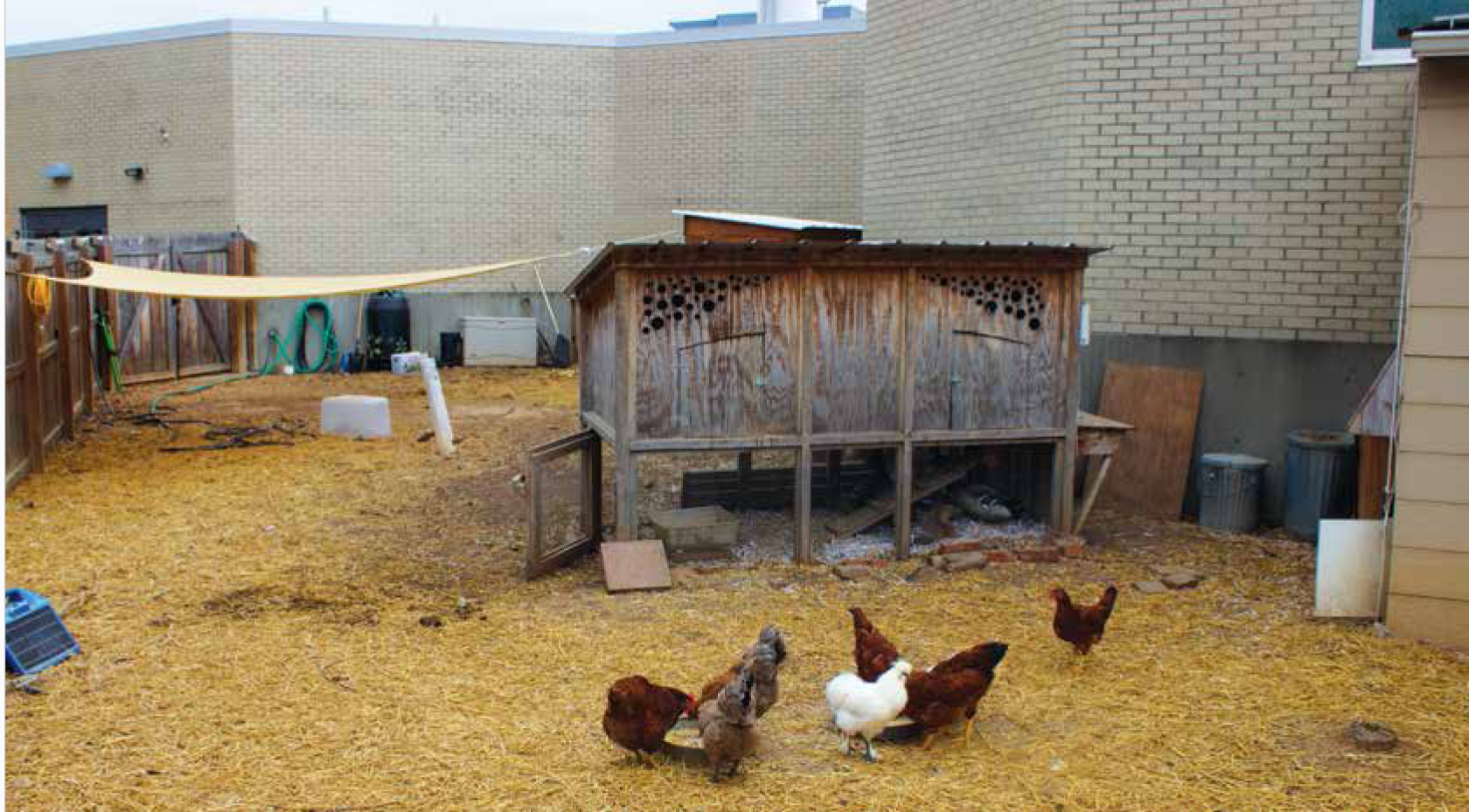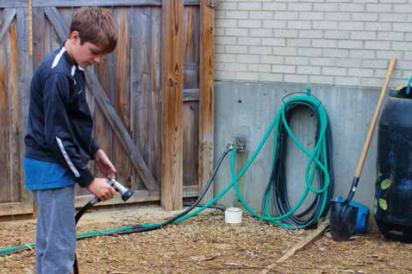Nature as Teacher
“Oh my gosh, he did it! Ginger caught a mouse!” Christine Brinkmann is nearly jumping up and down with excitement as an orange-tinged tabby cat darts past us, a small field mouse caught between his teeth.
Ginger and his brother, Spice, are the latest additions to Christine’s ever growing flock at St. Francis School in Goshen, Kentucky, where she serves as the environmental educator and garden coordinator for the pre-K through eighth grade progressive school. Her passion for educating the community about the benefits of a farm-fresh lifestyle knows no bounds, particularly when it comes to getting clean food into our schools.
After several years of running cooking demonstrations in various classrooms throughout the county, she was presented a challenge by the head of school at St. Francis: The school wanted to develop a garden program. She had six months and $10,000 to work her magic. Fast forward to the present day and you will find Christine’s touch through-out St. Francis’s Goshen campus, from the fish tank where she integrates aquaponics into math and science curriculums to the pollinator garden where art classes will meet to create “bug hotels.”
Perhaps the most popular aspects of Christine’s garden efforts are the animals she has been slowly but surely bringing into the mix, further diversifying the educational impact of St. Francis’s garden program through various grants for which she tirelessly applies.
“Animals are such a greatway to introduce our kids to the environment,” says Christine, a number of chickens pecking around our feet. A variety of colorful chicken breeds live at St. Francis, along with a flock of ducks and a beautiful angora rabbit. Additional animals have called St. Francis home over the years, including heritage-breed turkeys.
While all of the animals make for natural links to curriculum, many serve a specific purpose on the farm as well, like the 30 goats Christine enlisted to tackle the two and a half acres of kudzu bordering the schoolgrounds. From April to November the goats, on loan from a local farmer, munched their way through the dense foliage, clearing away this invasive plant without the use of chemicals. The same line of thinking wasin play when Ginger and Spicewere brought on board. The kittens had only been a part of the farm family for a couple of weeks when I visited, yet they were pouncing right into their role as pest combatants.
As Christine gives me a tour of her raised garden beds a student enters the fenced-in space of the mini farm, waving a quick hello as he turns on a hose and begins to fill feeders and wash out the coop. Christine hasher work cut out for her when it comes to keeping up with the garden and animals but receive sample help from the students, all of their own accord.
“They voluntarily sign up for tasks to complete during their break period,” she says, as another student joins in the upkeep efforts. “Kids care about the animals and, in turn, are more interested in the curriculum.” The lessons of responsibility are readily apparent.
“Animals are also a great way to talk about culture and diversity” she says, as she collects three eggs from the chicken coop, each a different shade of a pastel rainbow. “So many kids don’t realize that eggs come indifferent colors, they’ve only ever seen white eggs.” Christine purposefully avoids any chicken breeds that lay white eggs for this very reason, making sure her flock is full of unique and colorful birds, all intermingling and living together in harmony.
The opportunities to integrate the garden and its resident animals into the St. Francis curriculum are endless, from collecting clay from the ground for a pottery project, to learning about vermiculture for science class, to using the animals to broach big-picture topics that can often be a challenge for children to grasp. The animals serve as a natural bridge for these lessons and many more, keeping things fun and tangible along the way. Christine has big dreams for where she can take her garden next and I, for one, am excited to see how her flock will grow.
Lindsey McClave is a food and travel writer, co-host of “The Farmer & The Foodie” on Crescent Hill Radio, and chief food officer for Fixe Meals. LindseyMcClave.com.






